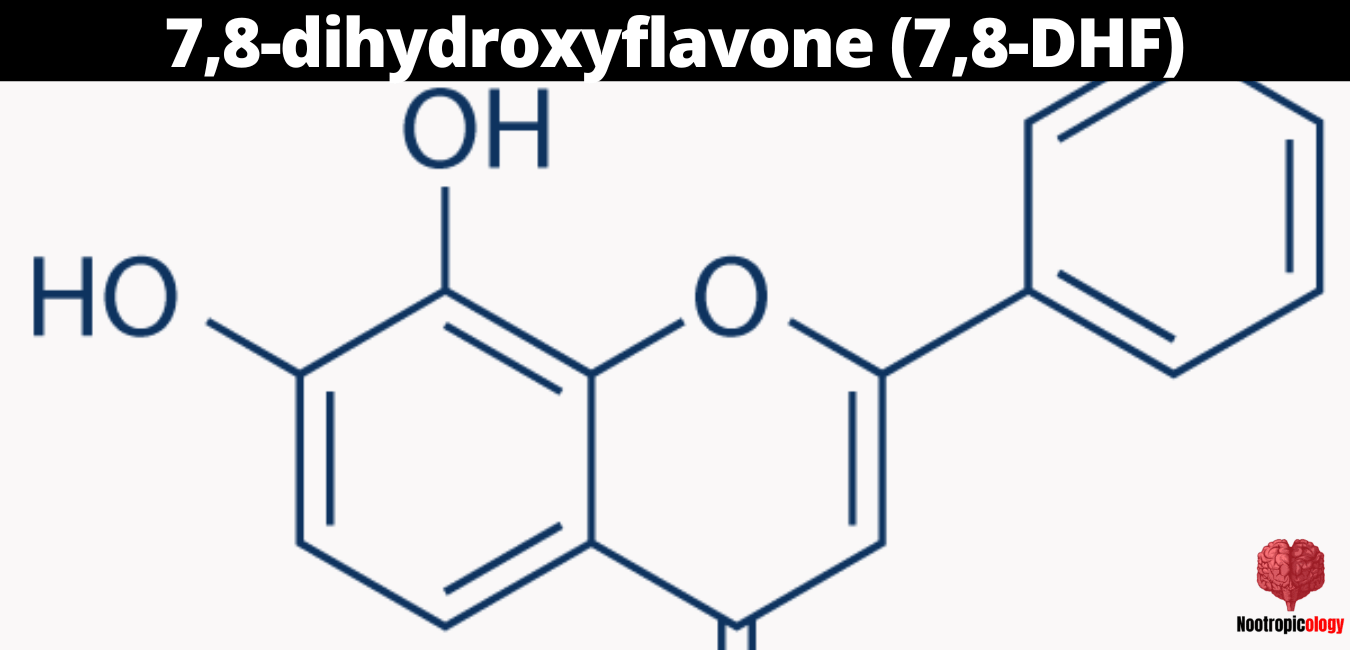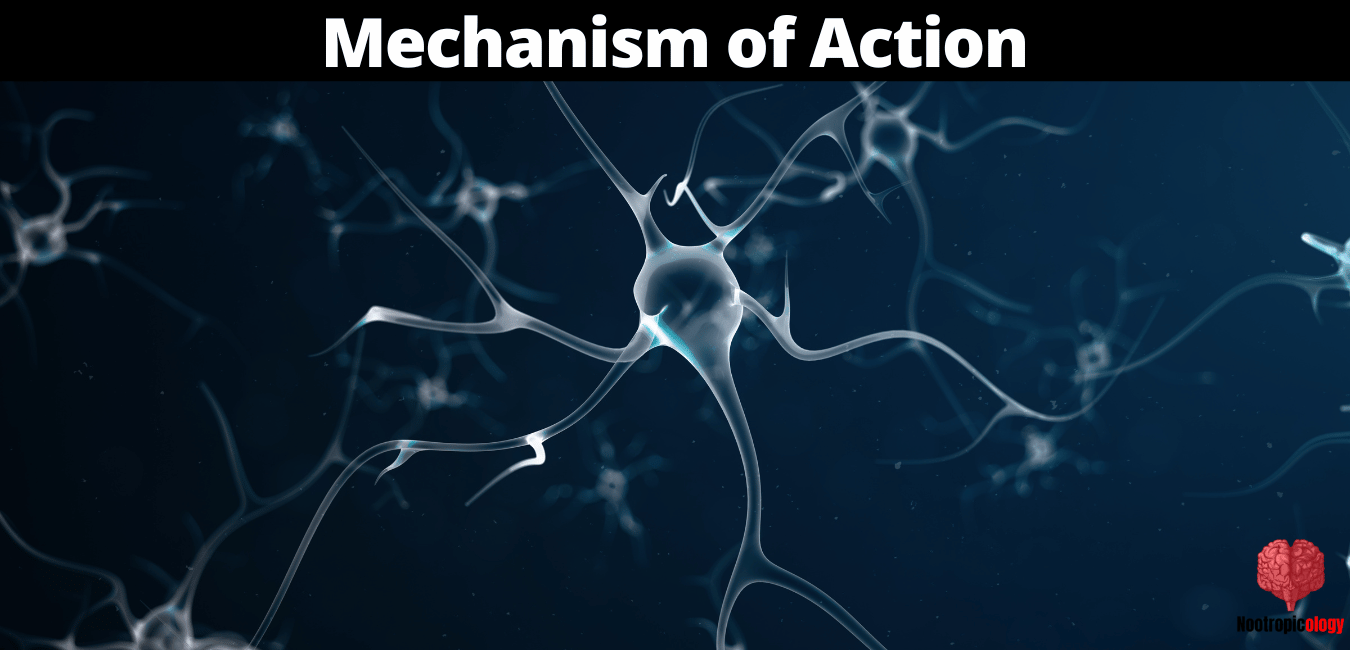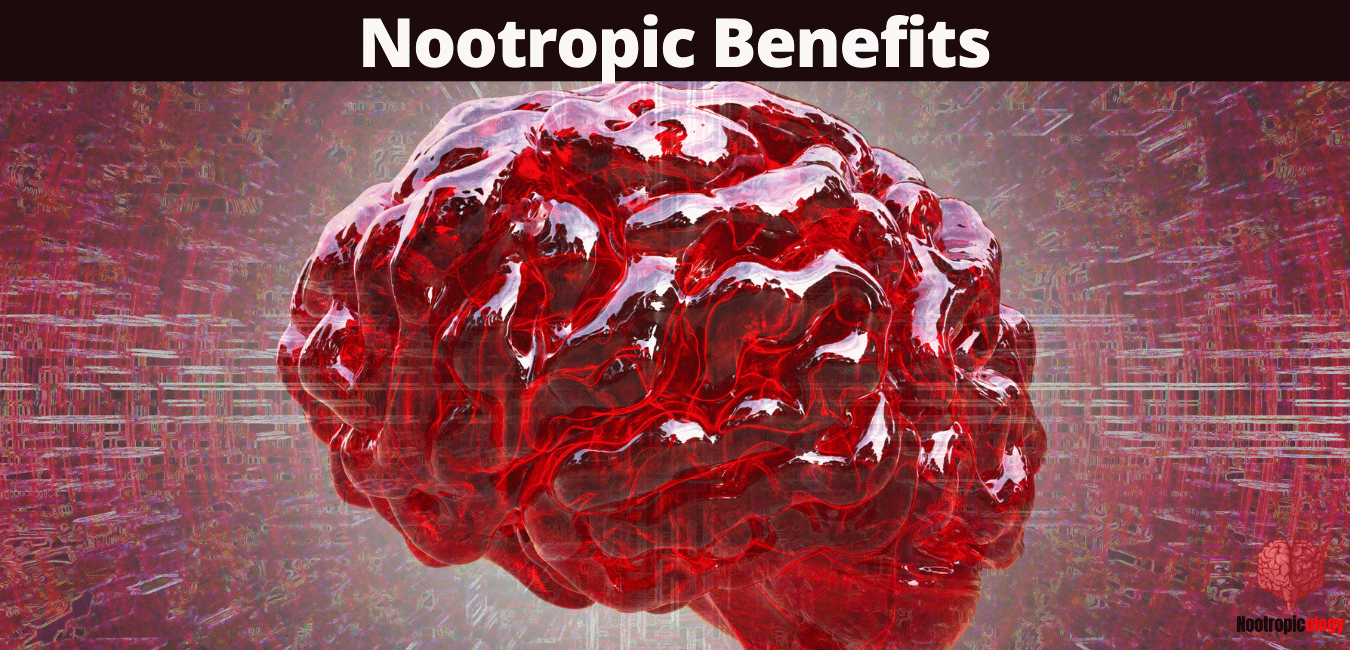7,8-Dihydroxyflavone Review: Nootropic Benefits, Side Effects, Usage & Safety
Tropoflavin, a naturally occurring flavone, has recently garnered attention for its potential therapeutic applications in treating a range of central nervous system disorders. This compound, also known as 7,8-dihydroxyflavone (7,8-DHF), is found in Godmania aesculifolia, Tridax procumbens, and primula tree leaves.
Acting as a potent and selective small-molecule agonist of the tropomyosin receptor kinase B (TrkB), Tropoflavin has demonstrated efficacy in animal models for various conditions, including Alzheimer's disease, Parkinson's disease, and depression.
Today, I'll review the scientific literature surrounding 7,8-DHF as a nootropic, covering its chemical structure, mechanism of action, preclinical evidence, nootropic benefits, safety, and potential clinical applications.
So without further ado, let's dive in, shall we?
Overview of 7,8-Dihydroxyflavone as a Nootropic Compound
7,8-Dihydroxyflavone (7,8-DHF) is a naturally occurring flavonoid that has emerged as a promising nootropic compound. It has demonstrated a range of neuropharmacological effects in preclinical studies, including improving memory, promoting neurogenesis, and protecting against neurodegeneration.
Flavonoids are a class of polyphenolic compounds found in various fruits, vegetables, and other plant sources. They have gained significant attention in recent years due to their antioxidant, anti-inflammatory, and neuroprotective properties.[1]
These compounds have been shown to exert beneficial effects on the brain, including enhancing cognitive function and protecting against neurodegenerative diseases. 7,8-DHF is one of the most prominent polyphenolic compounds and is gaining traction as a nootropic. It has been studied for its potential effects on mood, memory, learning, anxiety, and other cognitive functions.
The neurological effects of 7,8-DHF are thought to be mediated by its interaction with specific receptors. It has been found to be TrkA, a receptor involved in nerve growth factor signaling, which is important for neuronal survival and plasticity.
7,8-DHF works by modulating the expression of various receptors, including glutamate receptor subunits and BDNF. It can also have an effect on synapse formation, energy metabolism, and acetylcholine release in certain brain regions.[2]
Chemical Structure and Properties of 7,8-Dihydroxyflavone


It contains two hydroxyl groups on the benzene ring and one hydroxy group on the pyrone ring. Let's take a closer look at the chemical structure of 7,8-dihydroxyflavone below:
Molecular Formula and IUPAC Name
The molecular formula of 7,8-DHF is C15H10O5, which indicates that it comprises 15 carbon atoms, 10 hydrogen atoms, and 5 oxygen atoms.
Its IUPAC (International Union of Pure and Applied Chemistry) name is 2-(3,4-dihydroxyphenyl)-3,7-dihydroxy-4H-chromen-4-one.
This nomenclature signifies the presence of a chromen-4-one core, which is characteristic of flavones and hydroxyl groups at positions 3, 4, 7, and 8, as reflected in its common name.
Chiral Centers and Stereochemistry
7,8-DHF exhibits planar geometry due to the fused benzopyrone structure in its core, which consists of a benzene ring (A-ring) and a heterocyclic pyrone ring (C-ring).
The B-ring is an additional phenyl ring attached to the C-ring at the 2-position. The molecule does not possess any chiral centers, and as a result, no stereoisomers are present.
This absence of chirality simplifies the synthesis, isolation, and analysis of the compound, as well as the investigation of its biological activities.
Physicochemical Properties
7,8-Dihydroxyflavone is a yellow, crystalline solid with a molecular weight of 286.24 g/mol. It is sparingly soluble in water due to multiple hydroxyl groups, which can bond hydrogen with water molecules.
However, the compound is highly soluble in polar organic solvents, such as methanol, ethanol, and dimethyl sulfoxide (DMSO). The compound exhibits a strong UV absorption profile, with λmax values in the range of 260-280 nm for the A-band and 340-360 nm for the B-band, which is characteristic of flavonoids.[3]
These UV absorption properties, along with the compound's fluorescence, can be exploited for its quantification and detection in various analytical methods, such as high-performance liquid chromatography (HPLC) and mass spectrometry (MS).
7,8-DHF Mechanism of Action: BDNF Modulation & Trkb Receptor Activation


When it comes to the mechanism of action, 7,8-DHF is known to promote BDNF (brain-derived neurotrophic factor) production by binding and activating its receptor TrkB. Without getting too technical, this, in turn, can lead to a cascade of cellular activities that are beneficial for maintaining proper neuronal function and promoting neurogenesis.
Let's take a closer look at the main modes of action of 7,8-DHF below.
Brain-Derived Neurotrophic Factor (BDNF) And Its Role in Neuroplasticity
The importance of brain-derived neurotrophic factor (BDNF) in maintaining and enhancing brain health has become increasingly evident with the discovery of its reduced expression in neurodegenerative disorders, particularly Alzheimer's disease (AD).
BDNF is crucial for various neuronal functions, as it facilitates synaptic transmission, synaptogenesis, and synaptic plasticity through its signaling with the TrkB receptor. This makes the BDNF-TrkB signaling pathway a promising target for developing therapeutic interventions aimed at combating neurodegenerative conditions.
Recent research has delved into the potential benefits of a small molecule TrkB agonist, 7,8 dihydroxyflavone (7,8-DHF), in mitigating the early effects of AD-related pathology. In a study conducted on the 5xFAD mouse model of AD, the mice were treated with 7,8-DHF for two months, starting from one month of age.[4]
The outcomes of this investigation have shed light on the therapeutic potential of 7,8-DHF in addressing AD-associated neurochemical alterations and pathological markers. Notably, the 7,8-DHF treatment led to a decrease in cortical Aβ plaque deposition, which is a major hallmark of AD.
Additionally, it protected cortical neurons from reduced dendritic arbor complexity, contributing to preserving the overall neuronal structure. However, it did not significantly influence the density of dendritic spines.
According to Aytan, Nurgul et al., the treatment also demonstrated neuroprotective effects in the hippocampus, preventing increased levels of choline-containing compounds and mitigating glutamate loss.
Tropomyosin Receptor Kinase B (Trkb) Receptor Signaling Pathway
The tropomyosin receptor kinase B (TrkB) receptor plays a crucial role in mediating the effects of BDNF on neurons. As a transmembrane tyrosine kinase receptor, TrkB serves as the primary receptor for BDNF, initiating a cascade of intracellular signaling events upon binding with the neurotrophin.[5]
The activation of TrkB by BDNF triggers several key intracellular pathways, which include the phosphatidylinositol 3-kinase (PI3K)-Akt, mitogen-activated protein kinase (MAPK)-extracellular signal-regulated kinase (ERK), and phospholipase C gamma (PLCγ)-protein kinase C (PKC) pathways. Each of these pathways contributes to different aspects of neuronal function and well-being.[6]
The PI3K-Akt pathway is vital for promoting neuronal survival and inhibiting apoptosis. Activation of this pathway by BDNF-TrkB signaling enhances cell survival by inhibiting pro-apoptotic factors and stimulating anti-apoptotic factors, ensuring the preservation of healthy neurons.
The MAPK-ERK pathway, on the other hand, plays a significant role in neuronal differentiation and proliferation. BDNF-TrkB signaling promotes the activation of the MAPK-ERK pathway, which in turn supports the maturation and differentiation of neurons and their integration into existing neuronal networks.[7]
The PLCγ-PKC pathway is crucial for regulating synaptic plasticity,[8] a fundamental process in learning and memory. BDNF-TrkB signaling modulates the activity of this pathway, ultimately leading to alterations in synaptic strength and connectivity.
This modulation facilitates the adaptation and reorganization of neural circuits in response to new experiences and environmental stimuli.
7,8-Dihydroxyflavone as a Trkb Agonist and Its Implications
7,8-Dihydroxyflavone (7,8-DHF) is a small molecule with the unique ability to selectively bind to and activate the TrkB receptor in vitro and in vivo, effectively mimicking the actions of BDNF.[9] This characteristic has positioned 7,8-DHF as a potential therapeutic nootropic agent for various neurological disorders and an attractive molecule for studying the effects of BDNF signaling pathways.
By acting as a TrkB agonist, 7,8-DHF exerts its nootropic effects primarily through the modulation of BDNF-related signaling pathways, which in turn leads to the promotion of neurogenesis and the enhancement of synaptic plasticity.
The implications of 7,8-DHF as a TrkB agonist are far-reaching, with potential applications in the prevention and treatment of a wide range of neurological disorders, including Alzheimer's disease, Parkinson's disease, and depression.
By simulating the actions of BDNF, 7,8-DHF helps protects neurons from damage, promote their survival, and facilitate the growth and maintenance of new neuronal connections. This capacity to promote neuroplasticity, improve cognitive function, and alleviate symptoms of neurological diseases has made 7,8-DHF a promising candidate for drug development and further research.
7,8-DHF Preclinical Studies: In Vitro and in Vivo Evidence
Now that we’ve seen the potential of 7,8-DHF as a nootropic and a treatment for neurological disorders let’s look at some studies conducted to evaluate its efficacy.
Cellular Models: Neuronal Differentiation and Survival
In vitro, studies have demonstrated that 7,8-DHF promotes the differentiation and survival of various neuronal cell types, including cortical neurons, cerebellar granule neurons, and hippocampal neurons. These findings suggest that 7,8-DHF can have potential therapeutic effects in preventing neuronal loss and promoting neuronal regeneration.[10]
Rodent Models: Hippocampal Neurogenesis and Synaptic Plasticity
In vivo, studies using rodent models have shown that 7,8-DHF administration enhances hippocampal neurogenesis, the process by which new neurons are generated in the hippocampus.[11] Additionally, 7,8-DHF has been found to improve synaptic plasticity, as evidenced by increased long-term potentiation (LTP) and decreased long-term depression (LTD) in the hippocampus. These effects are thought to contribute to the observed improvements in memory and cognitive function.
Neuroprotective Effects in Neurodegenerative Disease Models
Preclinical studies have also demonstrated the neuroprotective effects of 7,8-DHF in various animal models of neurodegenerative diseases, such as Alzheimer's disease, Parkinson's disease, and amyotrophic lateral sclerosis (ALS).[12]
The compound has been shown to reduce neuronal loss, ameliorate cognitive deficits, and attenuate pathological markers in these models, suggesting potential therapeutic applications in human neurodegenerative conditions.
7,8-DHF Nootropic Benefits: Cognitive Enhancement and Neuroprotection


Regarding its nootropic benefits, 7,8-DHF exerts its effects mainly through 4 mechanisms:
Memory Consolidation and Retrieval: Hippocampal-Dependent Tasks
7,8-DHF has been found to enhance memory consolidation and retrieval in various hippocampal-dependent learning and memory tasks in rodent models, such as the Morris water maze, novel object recognition, and contextual fear conditioning.[13]
These findings suggest that 7,8-DHF can be a promising nootropic for improving memory function in both healthy individuals and those with memory impairments.
Synaptic Plasticity: Long-Term Potentiation and Depression
As mentioned earlier, 7,8-DHF has been shown to modulate synaptic plasticity by promoting LTP and reducing LTD in the hippocampus. These effects are thought to be mediated by its ability to activate the TrkB receptor and subsequently enhance BDNF signaling pathways.[14]
This modulation of synaptic plasticity contributes to the observed improvements in cognitive function following 7,8-DHF administration.
Antioxidant Properties: Reactive Oxygen Species Scavenging and Lipid Peroxidation
7,8-DHF possesses antioxidant properties, as demonstrated by its ability to scavenge reactive oxygen species (ROS) and reduce lipid peroxidation.[15] These effects contribute to its neuroprotective actions by mitigating oxidative stress-induced neuronal damage and dysfunction.
Anti-inflammatory Effects: Modulation of Microglial Activation and Cytokine Production
In addition to its antioxidant properties, 7,8-DHF has been found to exert anti-inflammatory effects by modulating microglial activation and reducing the production of pro-inflammatory cytokines such as TNF-α and IL-1β.[16]
This further contributes to its neuroprotective and nootropic effects by preventing inflammation-mediated neuronal damage.
Pharmacokinetics, Safety, and Dosage Considerations
Now that we’ve discussed the possible uses and benefits of 7,8-Dihydroxyflavone, let’s take a closer look at the pharmacokinetics and safety of this nootropic compound:
- Absorption, Distribution, Metabolism, and Excretion (ADME): 7,8-DHF exhibits favorable pharmacokinetic properties, including rapid absorption, wide distribution, and efficient brain penetration. It is metabolized primarily by the liver, with the majority of the compound being excreted in the feces and a smaller portion in the urine.
- Blood-Brain Barrier Permeability and Brain Tissue Penetration. One of the key features of 7,8-DHF is its ability to cross the blood-brain barrier (BBB) and penetrate brain tissue, which is crucial for its efficacy as a nootropic. Studies have demonstrated that 7,8-DHF reaches therapeutically relevant concentrations in the brain following oral administration, suggesting that it may be an effective candidate for targeting central nervous system (CNS) disorders.
- Preclinical Safety Profile - Acute and Chronic Toxicity Studies: Preclinical safety studies have demonstrated that 7,8-DHF has a favorable safety profile, with no significant adverse effects observed in rodents' acute and chronic toxicity studies. However, further safety evaluations, including studies in higher animals and human subjects, are required to establish its safety profile for clinical use.[9]
- Dose-Response Relationships and Optimal Dosing Regimen: While the optimal dosing regimen for 7,8-DHF in humans has not yet been established, animal studies have provided some insights into effective dose ranges. In rodent models, doses ranging from 1 to 50 mg/kg have been shown to exert nootropic and neuroprotective effects. The effective dose for humans may differ and will require further investigation in clinical trials.
People taking 7,8-DHF as a nootropic take 25 mg of 7,8 DHF 1-2 times daily. As with any nootropic, it is important to start at a low dose and gradually increase as needed in order to assess individual tolerance.
It is also recommended to cycle 7,8-DHF every 6-12 weeks. Cycling is the practice of taking a supplement for a period of time, then breaking it before starting to take the supplement again.
Taking a break from the supplement can help reset your body and reduce side effects while increasing effectiveness. Administering 7,8-DHF under the tongue (sublingually) is preferable because it improves bioavailability.
Side Effects and Drug Interactions of 7,8-Dihydroxyflavone
While preclinical studies have demonstrated a favorable safety profile for 7,8-DHF, potential side effects in human subjects remain largely unknown. As with any novel compound, it is essential to proceed with caution and monitor for potential adverse effects when evaluating its use in humans.
Some potential side effects that may be associated with 7,8-DHF, based on its mechanism of action and effects on the TrkB receptor, could include:
- Headaches: BDNF and TrkB receptor activation regulate neuronal activity and excitability; 7,8-DHF administration might lead to headaches in some individuals.
- Insomnia: Increased neuronal activity and enhanced synaptic plasticity may affect sleep patterns, potentially resulting in insomnia or disrupted sleep.
- Gastrointestinal issues: As with many bioactive compounds, 7,8-DHF may cause gastrointestinal side effects such as nausea, vomiting, or diarrhea in some individuals.
It is important to note that these potential side effects must be further investigated in clinical trials. Given its ability to modulate BDNF signaling and TrkB receptor activation, caution should also be exercised when stacking 7,8-DHF with other drugs that target these pathways or have similar mechanisms of action.
Possible drug interactions to consider include:
- Antidepressants: As some antidepressants, particularly selective serotonin reuptake inhibitors (SSRIs) and serotonin-norepinephrine reuptake inhibitors (SNRIs), have been shown to increase BDNF levels, co-administration with 7,8-DHF may lead to additive or synergistic effects, potentially increasing the risk of side effects.
- Antiepileptic drugs: Some antiepileptic drugs, such as valproic acid, have been reported to modulate BDNF expression and TrkB receptor activation. Concurrent use of these drugs with 7,8-DHF may result in altered drug effects or increased risk of side effects.
- Other nootropics: As some nootropic agents, like racetams and noopept, have been shown to modulate BDNF signaling or enhance synaptic plasticity, co-administration with 7,8-DHF may lead to additive or synergistic effects. This may necessitate dose adjustments or close monitoring for potential side effects.
Further studies are required to understand better the potential drug interactions involving 7,8-DHF and to establish appropriate dosing and safety guidelines for its use in combination with other medications.
Frequently Asked Questions (FAQ)
Now let's look at the most frequently asked questions about 7,8-Dihydroxyflavone.
What Is The Half-Life Of 7,8-Dihydroxyflavone?
Currently, there is limited information available on the half-life of 7,8-dihydroxyflavone (7,8-DHF) in humans. Most research on this compound has been conducted in vitro or in animal models. The elimination half-life in mice is <30 minutes.
Can 7,8-Dihydroxyflavone Be Used to Treat Neurodegenerative Diseases?
Preclinical studies suggest that 7,8-DHF has neuroprotective effects in animal models of neurodegenerative diseases such as Alzheimer's disease, Parkinson's disease, and amyotrophic lateral sclerosis (ALS).
What Is the Bioavailability of 7,8-DHF?
The bioavailability of 7,8-dihydroxyflavone (7,8-DHF) in animal studies is approximately 5% (in mice) due to its poor solubility and rapid metabolism. Despite this low bioavailability, 7,8-DHF can still cross the blood-brain barrier and affect the brain. Further research is needed to determine its bioavailability in humans and explore methods to enhance it.
How Does 7,8-DHF Make You Feel?
As a nootropic, 7,8-dihydroxyflavone (7,8-DHF) positively impacts cognitive function and mood. Individuals experience improved memory, increased focus, and enhanced learning capabilities. Additionally, due to its potential antidepressant and anxiolytic effects, 7,8-DHF helps alleviate feelings of anxiety or depression.
How Long Does It Take for 7,8-DHF to Work?
The onset of action for 7,8-DHF may vary between individuals, but preclinical studies in rodents suggest that effects on memory and learning could be observed within 1-2 hours after administration. Anecdotal evidence in humans suggests that most people start feeling the effects within an hour or two of taking 7,8-DHF.
Conclusion
7,8-Dihydroxyflavone is a promising nootropic compound with a range of neuropharmacological effects, including memory enhancement, neuroprotection, and modulation of synaptic plasticity. Its ability to activate the TrkB receptor and mimic BDNF signaling underlies many of these effects and highlights its potential as a therapeutic agent for various neurological disorders.
While the preclinical evidence for 7,8-DHF is compelling, further research is needed to fully understand its mechanism of action, safety profile, and optimal dosing regimen. Clinical trials in human subjects will be crucial for translating these findings into clinical applications and assessing their potential as a nootropic and neuroprotective agent.
The development of 7,8-DHF as a therapeutic agent may have broader implications for personalized medicine and neuroscience, particularly in the context of neurodegenerative diseases and mood disorders.
By targeting specific molecular pathways such as BDNF signaling, 7,8-DHF can provide a novel approach to treating these conditions and contribute to the advancement of personalized medicine in the field of neuroscience.
- Mutha, Rakesh E et al. “Flavonoids as natural phenolic compounds and their role in therapeutics: an overview.” Future journal of pharmaceutical sciences vol. 7,1 (2021): 25. doi:10.1186/s43094-020-00161-8 ↑
- Liu, Chaoyang et al. “7,8-dihydroxyflavone, a small molecular TrkB agonist, is useful for treating various BDNF-implicated human disorders.” Translational neurodegeneration vol. 5 2. 6 Jan. 2016, doi:10.1186/s40035-015-0048-7 ↑
- National Center for Biotechnology Information. "PubChem Compound Summary for CID 1880, 7,8-Dihydroxyflavone" PubChem, https://pubchem.ncbi.nlm.nih.gov/compound/7_8-Dihydroxyflavone. Accessed 9 May, 2023. ↑
- Aytan, Nurgul et al. “Protective effects of 7,8-dihydroxyflavone on neuropathological and neurochemical changes in a mouse model of Alzheimer's disease.” European journal of pharmacology vol. 828 (2018): 9-17. doi:10.1016/j.ejphar.2018.02.045 ↑
- Li, Yuehua et al. “Tropomyosin receptor kinase B (TrkB) signalling: targeted therapy in neurogenic tumours.” The journal of pathology. Clinical research vol. 9,2 (2023): 89-99. doi:10.1002/cjp2.307 ↑
- Tecuatl, Carolina et al. “TrkB-mediated activation of the phosphatidylinositol-3-kinase/Akt cascade reduces the damage inflicted by oxygen-glucose deprivation in area CA3 of the rat hippocampus.” The European journal of neuroscience vol. 47,9 (2018): 1096-1109. doi:10.1111/ejn.13880 ↑
- Albert-Gascó, Héctor et al. “MAP/ERK Signaling in Developing Cognitive and Emotional Function and Its Effect on Pathological and Neurodegenerative Processes.” International journal of molecular sciences vol. 21,12 4471. 23 Jun. 2020, doi:10.3390/ijms21124471 ↑
- Yoshii, Akira, and Martha Constantine-Paton. “Postsynaptic BDNF-TrkB signaling in synapse maturation, plasticity, and disease.” Developmental neurobiology vol. 70,5 (2010): 304-22. doi:10.1002/dneu.20765 ↑
- Liu, Chaoyang et al. “7,8-dihydroxyflavone, a small molecular TrkB agonist, is useful for treating various BDNF-implicated human disorders.” Translational neurodegeneration vol. 5 2. 6 Jan. 2016, doi:10.1186/s40035-015-0048-7 ↑ ↑
- Chen, Chun et al. “The prodrug of 7,8-dihydroxyflavone development and therapeutic efficacy for treating Alzheimer's disease.” Proceedings of the National Academy of Sciences of the United States of America vol. 115,3 (2018): 578-583. doi:10.1073/pnas.1718683115 ↑
- Hsiao, Ya-Hsin et al. “Social interaction rescues memory deficit in an animal model of Alzheimer's disease by increasing BDNF-dependent hippocampal neurogenesis.” The Journal of neuroscience : the official journal of the Society for Neuroscience vol. 34,49 (2014): 16207-19. doi:10.1523/JNEUROSCI.0747-14.2014 ↑
- Maher, Pamela. “The Potential of Flavonoids for the Treatment of Neurodegenerative Diseases.” International journal of molecular sciences vol. 20,12 3056. 22 Jun. 2019, doi:10.3390/ijms20123056 ↑
- Bollen, E et al. “7,8-Dihydroxyflavone improves memory consolidation processes in rats and mice.” Behavioural brain research vol. 257 (2013): 8-12. doi:10.1016/j.bbr.2013.09.029 ↑
- Levy, Marion J F et al. “Neurotrophic factors and neuroplasticity pathways in the pathophysiology and treatment of depression.” Psychopharmacology vol. 235,8 (2018): 2195-2220. doi:10.1007/s00213-018-4950-4 ↑
- Chen, Jing et al. “Antioxidant activity of 7,8-dihydroxyflavone provides neuroprotection against glutamate-induced toxicity.” Neuroscience letters vol. 499,3 (2011): 181-5. doi:10.1016/j.neulet.2011.05.054 ↑
- Park, Hye Young et al. “7,8-Dihydroxyflavone attenuates the release of pro-inflammatory mediators and cytokines in lipopolysaccharide-stimulated BV2 microglial cells through the suppression of the NF-κB and MAPK signaling pathways.” International journal of molecular medicine vol. 33,4 (2014): 1027-34. doi:10.3892/ijmm.2014.1652 ↑
